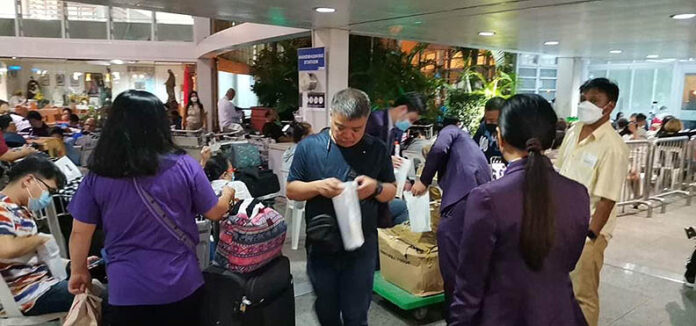
- Flight operations in the Philippines may be fully restored in 72 hours following a power outage in the country’s air navigation system on January 1 that has caused massive flight disruptions
- Ninoy Aquino International Airport is preparing to accommodate 700 flights on Jan 2, according to airport authorities
- The Department of Transportation will conduct a feasibility study for the procurement of a back-up for the Civil Aviation Authority of the Philippines’ air traffic management system
- Transportation Secretary Jaime Bautista said the acquisition will be expedited following the widespread flight disruptions
- The back-up system could cost more than P13 billion
Flight operations in the Philippines may be fully restored in 72 hours following a power outage in the air navigation system on January 1 that caused massive flight disruptions in the country’s main gateways, including Ninoy Aquino International Airport (NAIA), Clark International Airport, Mactan-Cebu International Airport and Davao International Airport.
Manila International Airport Authority (MIAA) general manager Cesar Chiong in an online briefing on January 1 said this estimate is based on experience from the last typhoon that affected airport operations.
Airport authorities have allowed MIAA to operate 24/7 so airlines can mount more flights and night landings. NAIA runways are ordinarily closed from 1:30am to 3:30am.
Chiong said they are also directly coordinating with airlines, requesting them to use more wide-body aircraft to accommodate more passengers.
In a later interview with ANC Rundown, Chiong said NAIA is preparing for 700 flights on Jan 2.
NAIA is “not really fully (operational). Prior to yesterday, we accept about 20 arrivals per hour. Right now, we are only accepting 15 arrivals per hour but there are no limits on the departures,” he said.
From 10am to 4pm on January 1 there were no inbound or outbound flights in Philippine airspace, affecting more than 65,000 passengers.
More than P13B back-up system
In the same Jan 1 online briefing, Transportation Secretary Jaime Bautista said his department will conduct a feasibility study for the procurement of a back-up for the Civil Aviation Authority of the Philippines’ (CAAP) air traffic management system.
The system may cost more than P13 billion, the same amount needed to procure the existing communications, navigation, surveillance/air traffic management (CNS/ATM) system, he said.
Proposal for a back-up system had already been presented at a Cabinet meeting but Bautista said the January 1 disruption is forcing his department to expedite the acquisition.
The feasibility study will be presented to the National Economic and Development Authority, he added.
CAAP acting director general Antonio Manuel Tamayo, during the same briefing, acknowledged CAAP’s CNS/ATM is “outdated” and that they had already recommended a back-up system to the President.
A maintenance team regularly maintains and monitors the system, whose warranty expired in 2019.
CAAP’s CNS/ATM, which was completed in 2017 and inaugurated in January 2018, is a state-of-the art computer and satellite-based air traffic management technology similar to those in use in Australia, Taiwan, and European countries. It started comprehensive operations in July 2019.
The CNS/ATM project started in 2009 but due to delay in construction and other challenges, it did not hit its target completion date in 2016. Previously, there were only three radars—in NAIA (Pasay), Clark, and Tagaytay—which covered only 30% of Philippine airspace.
Ten additional radars have since been installed, which enabled 100% coverage of the entire Philippine airspace.
The project was funded by the Japan International Cooperation Agency for JPY22 million (US$198 million) and includes a central traffic control complex housed in the CAAP office in Manila.
CAAP’s Air Traffic Management Center (ATMC), which houses the CNS/ATM, went down 9:49 am on January 1 due to a power outage which resulted in the loss of communication, radio, radar, and internet.
The two uninterruptible power supply systems, the navigation system’s primary and secondary sources of power, failed to function. When authorities tried to reconnect to the commercial power grid, a power surge was experienced: the air navigation system only required 220 volts but the commercial network supplied 380 volts.
As of 4 pm on Jan 1, the ATMC resumed partial operations and by 5:50 pm was operating normally even as equipment restoration was still ongoing.
Tamayo said they cannot assurances that the January 1 disruption will not happen again but noted that have already budgeted this year P124 million for upgrades on the existing system.




